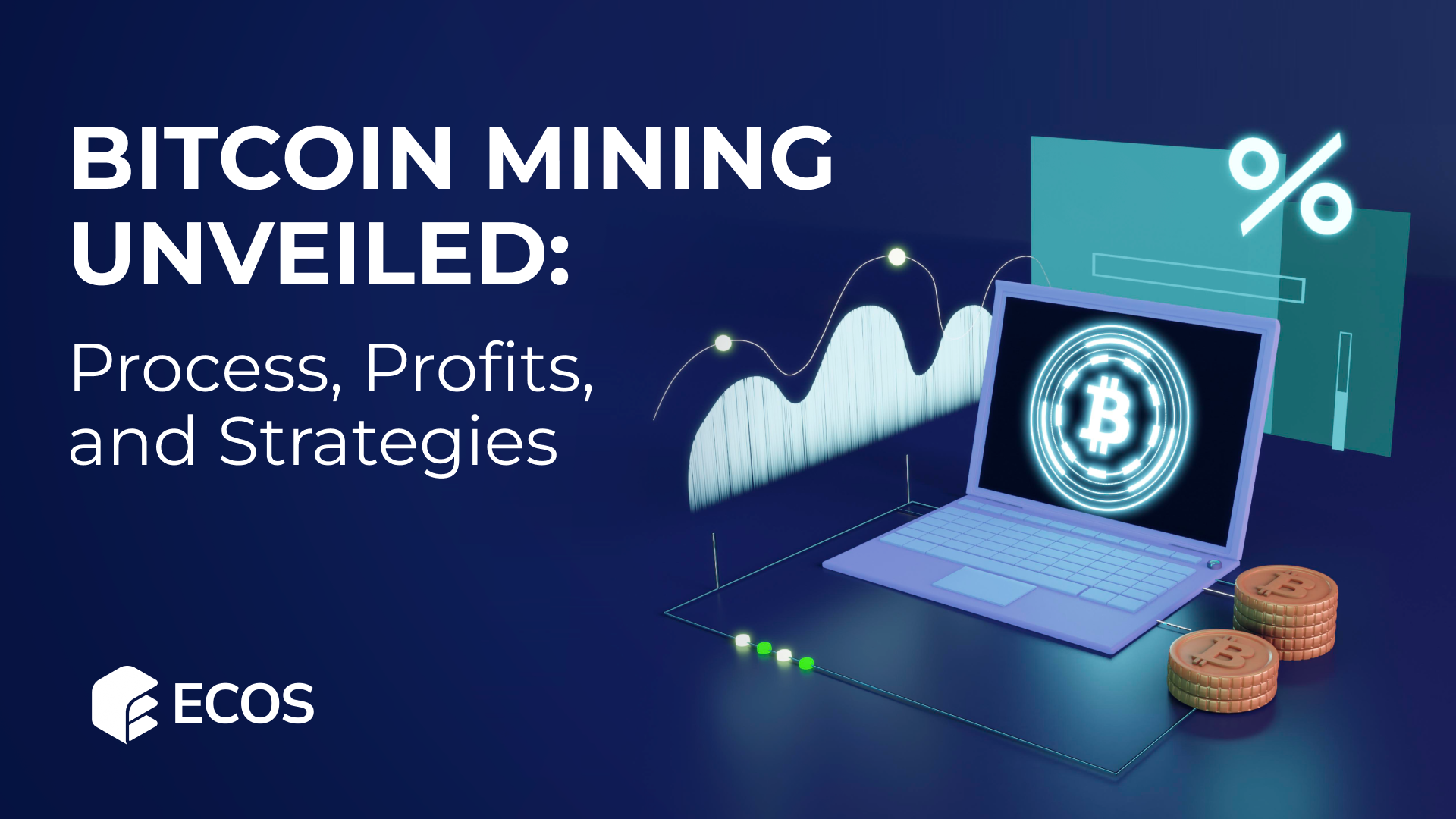Bitcoin Mining Unveiled: Process, Profits, and Strategies

Key Takeaways
-
Bitcoin mining is the validation of transactions within the Bitcoin network, involving the bundling of transactions into blocks verified by miners solving complex mathematical puzzles. The first successful miner is rewarded with the block reward, emphasizing the importance of the ASICs hash rate in influencing the likelihood of winning the block.
-
To embark on a Bitcoin mining journey, individuals need specialized equipment (ASICs), software, a crypto wallet, a stable internet connection, and membership in a mining pool. Knowledge of Bitcoin and mining principles is crucial for success.
-
Calculating potential profits from Bitcoin mining involves considering BTC rate, network difficulty, BTC halving, and mining expenses. Success in BTC mining depends on factors such as efficient mining operations, updated hardware, optimized electricity costs, joining reliable mining pools, and reducing investment risks through diversification. Smart miners balance investments in mining equipment with direct BTC purchases for a more resilient portfolio.
How does Bitcoin Mining work?
In this article let us delve into the intricate world of Bitcoin mining, aiming to demystify the process and address key queries such as the generation of Bitcoins and the calculation of potential mining profits. Let’s dive deep into the realm of crypto mining, a concept conceptualized over a decade ago by Satoshi Nakamoto, the enigmatic creator of Bitcoin.
What is Mining?
Mining, in essence, is the validation of transactions within the Bitcoin network. The journey begins when transactions are initiated, each receiving a unique identification number, or hash, courtesy of the mining software. These transactions are then bundled to form a block, which miners must verify by solving complex mathematical puzzles. The first miner to successfully crack the code is rewarded with the block reward, currently set at 6.25 BTC per block. The importance of the ASICs hash rate lies in its ability to determine the number of guesses per second the device can make, ultimately influencing the likelihood of winning the block.
To avoid overload, a 1-megabyte limit is imposed on verified transactions in the Bitcoin network. This, along with the identification number from the previous block, constitutes the block awaiting verification. Worth noting is the impending reduction of the block reward from 6.25 to 3.125 Bitcoins in 2024 after the next halving event, emphasizing the temporal value of time in the mining process.
The validation of transactions serves multiple purposes, including the introduction of new coins into circulation, prevention of counterfeiting and double-spending, and the maintenance of decentralization within the Bitcoin network.
Essential components for Bitcoin mining
Now, let’s explore how individuals can embark on their Bitcoin mining journey. Essential components include:
- Mining Equipment – ASICs: Specialized machines designed for Bitcoin mining, surpassing the capabilities of regular graphics cards.
- Software and a Crypto Wallet: Necessary tools for monitoring and securely storing earned Bitcoins.
- Electricity: Mining efficiency is contingent on a robust and affordable power supply.
- Cooling System: Vital for maintaining optimal temperatures and preventing ASICs from malfunctioning due to overheating.
- Stable Internet Connection: Crucial for seamless connectivity to the Bitcoin mining pool.
- Membership in a Mining Pool: Joining forces with other miners enhances the chances of successfully forming a block and reaping the associated rewards.
- Knowledge: A foundational understanding of Bitcoin and mining principles is paramount.
With these prerequisites in place, aspiring miners are well-positioned to embark on their BTC mining endeavors.
Calculation of potential mining profits
Calculating potential profits from Bitcoin mining involves considering four major factors: BTC rate, network difficulty, BTC halving, and mining expenses. Mining, as a strategy, hinges on a long-term BTC growth forecast, with profitability influenced by factors such as the rising value of Bitcoin, network difficulty, and the impact of halving events.
Key factors and strategies for successful Bitcoin mining
Successful BTC mining involves a combination of five key factors and strategies:
- Setting up Mining Operations Efficiently
- Using Updated Hardware
- Optimizing Electricity Costs
- Joining Reliable Mining Pools
- Reducing Investment Risks
While no investment is entirely risk-free, smart miners mitigate risks through diversification. Allocating funds to both mining equipment and direct BTC purchases creates a balanced investment portfolio, reducing overall risk exposure.
In conclusion, Bitcoin mining demands a long-term perspective, patience, and a strategic approach to navigate the challenges inherent in the mining process.
What is Bitcoin mining and how does it work?
Bitcoin mining is the process of validating transactions within the Bitcoin network. Miners use specialized machines (ASICs) to solve complex mathematical puzzles, verifying transaction blocks. The first miner to solve the puzzle is rewarded with new Bitcoins and transaction fees.
What are the essential components for Bitcoin mining?
To start Bitcoin mining, you need ASIC mining equipment, software, a crypto wallet, a stable internet connection, a cooling system, and membership in a mining pool. A foundational understanding of Bitcoin and mining principles is also crucial.
How is potential profit from Bitcoin mining calculated?
Potential profits are calculated by considering factors such as the BTC rate, network difficulty, BTC halving, and mining expenses. Successful mining strategies involve efficient operations, updated hardware, optimized electricity costs, joining reliable mining pools, and reducing investment risks through diversification.
What is the significance of the ASICs hash rate in Bitcoin mining?
The ASICs hash rate determines the number of guesses per second a mining device can make, influencing the likelihood of winning the block reward. It plays a crucial role in the competitiveness of miners in the network.
What are the key factors and strategies for successful Bitcoin mining?
Successful Bitcoin mining involves setting up operations efficiently, using updated hardware, optimizing electricity costs, joining reliable mining pools, and reducing investment risks through diversification. A long-term perspective, patience, and a strategic approach are essential for navigating the challenges of the mining process.









